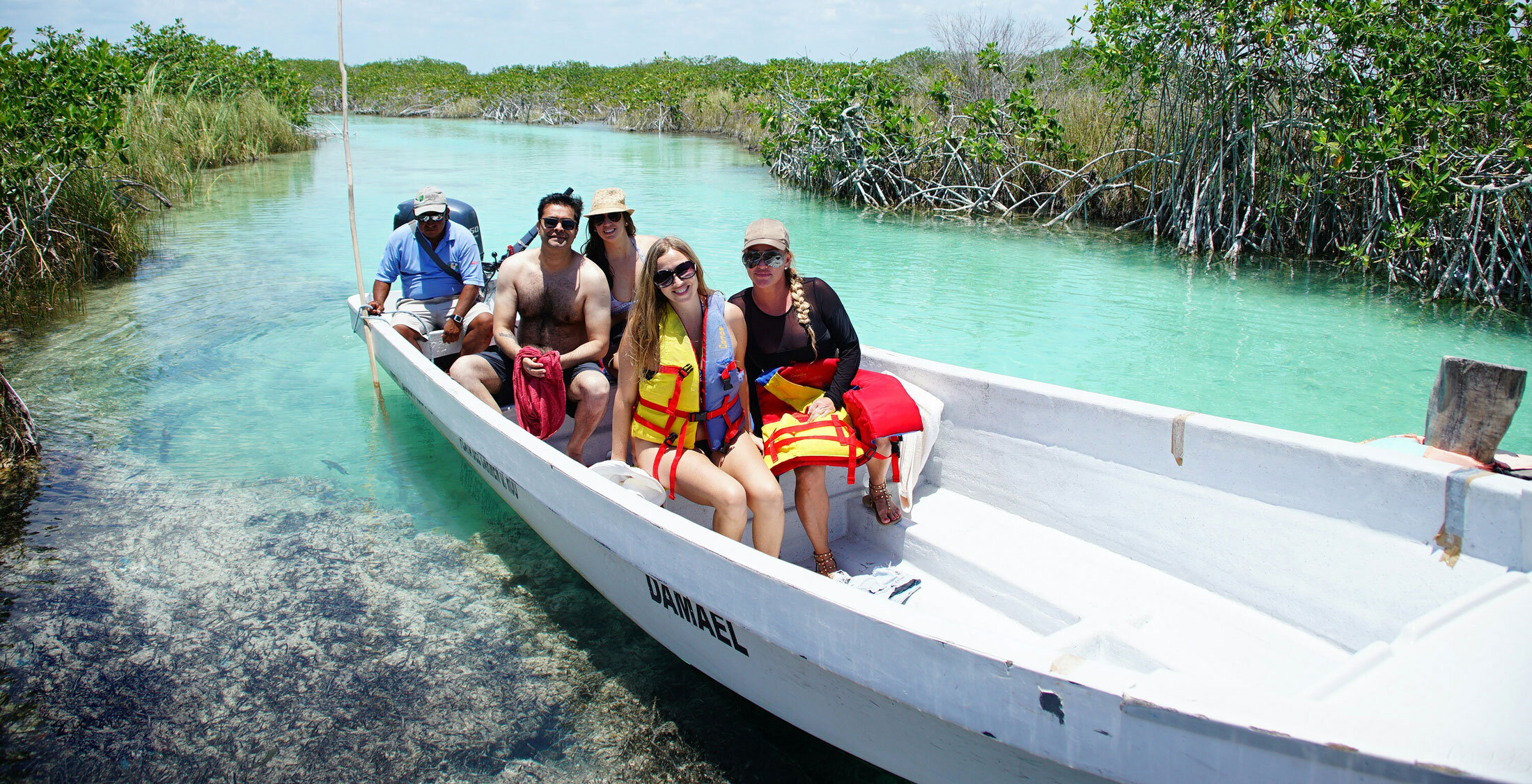The Ancient Sea Traders of Muyil: The Ruins South of Tulum
Written by Lydia Jones
A trip to Muyil ruins and its lagoons is simply my favorite trip in Yucatán. Here you look deep into nature and understand life better, in my experience. First you go to see the main pyramid of the ancient city, which also served as a lighthouse, and then you float in the lazy river in the middle of an eco park.
And how are the two experiences connected? Muyil in the past was an important port, connected to the sea through two lagoons, called Muyil and Chunyaxché. Muyil city was constructed inland on the lagoon shore for the protection of the port. The lagoons were connected with each other via a canal and with Boca Paila on the coast through a river. The canal was built by the ancient Maya right through Sian Ka’an, land of wetlands and mangrove. Yes, this ancient complex is situated in today’s biosphere reserve. Sian Ka’an means ’where the sky was born’. You will understand why if you take a boat across the lakes after the visit to the ruins. The boat stops at the old immigration house where you enter the canal, for a float of half an hour. It is like a lazy river, but not in an artificial park; instead, in the middle of a protected biosphere. As you lie on your back, when floating, all you can see is the sky. Occasionally, an egret can flow into your vision. The float is simply sensational; time stops and all you can sense is the nature around you and its silence. You will lose yourself and truly connect with nature.
As for the city port, it is pretty old. Pottery shards have been found dating back to as early as 350 BC and the town was still active until almost 1500 AD, making it boththe earliest and the longest-occupied site on the east coast of the Yucatán. During the Post-Classic period (1200-1500 AD), ports such as Tulum, Xaman-Há, Xel-Há, Muyil and Cozumel controlled the trade traffic. Many coastal pyramids served as lighthouses and the ports had both a system of tolls, and were always ready to feed and accommodate the traders. Here they would replenish their water supplies and trade their goods in the market. Large trading canoes (hollowed out from ceiba tree trunks) held up to 20 people as well as a significant amount of trade goods. They were good navigators, always rowing near the coast on the way down to Belize and Panama, to take advantage of the inshore currents, and sailing further from the coast on the way back, to utilize the Caribbean current.
Merchants would also use a network of 'white roads' built from limestone (such a road was called sacbé) and rivers to transport their cargo from the coast to cities far inland. Large cities required food brought into markets, such as turkeys, ducks, dogs, fish, honey, beans and fruit. Cocoa beans were used as currency, but also to make chocolate, a drink primarily enjoyed by the nobles. Further trade goods included salt (sea salt was extracted at Las Coloradas and Celestún), cotton, henequen, stingray spines, cinnabar, natural dyes, shells, jade, quetzal feathers, pink flamingo feathers, animal hides and ceramics. Mayan traders obtained obsidian and basalt (for knives) and grinding stones from central Mexico; turquoise came from the far north and gold was introduced to the area from Costa Rica and western Panama.
Specialists such as architects, mathematicians, scribes and engineers sold their services at the market as well. Merchants and artisans who made goods for the luxury market formed a new middle class, in addition to the nobles and commoners. Governing this middle class was a smaller class of specially educated merchant governors.
Another interesting category of Muyil visitors would have been the pilgrims. The deity who was worshipped in Muyil and along the whole coast was Ixchel, the goddess of the Moon, midwifery and medicine. Her lunar association gave her power over the waves and tides and she was the patron of the sea and of fishing. Since ancient times, Maya women have undertaken pilgrimages in canoes to the coastal islands of Isla Mujeres and Cozumel, and the port of Muyil would also have served as a place of rest for the pilgrims who came through the jungle on foot, all the way from Belize.
A truly magical place, with well over 2,000 years of history!








